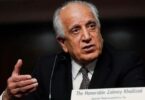KABUL (Agencies): At the crossroads of Central and South Asia, Afghanistan has for centuries been a meeting place for cultures and ethnicities, as evidenced in the striking assortment of headgear worn by its people. The style of a cap or turban confers status and standing on its wearer, and also signifies what part of the country they come from or which ethnic group they belong to.
An Uzbek cap, for example – flat and round, and worn tight – is decorated with colourful woollen embroidery and common among Afghans from the northern regions of Mazar-i-Sharif, Faryab and Jawzjan. Pashtuns, Afghanistan’s biggest ethnic group from which the ruling Taliban mostly hail, often prefer plain black turbans, wrapped tightly over a cap with a “tail” falling on the shoulder.
Villagers say a Pashtun boy marks his entry into manhood when he takes on the turban. In southern Kandahar, young men don round, soft caps that are split in the front above the forehead, while elderly men, especially farmers, prefer turbans and scarves. Afghan women in some rural areas, particularly in the western province of Herat, also wear embroidered caps over or under a chadar shawl which flows over their shoulders.
The pakol, worn by Tajiks, is soft with chubby rolls of sheep wool to keep cold heads warm in winter. It became emblematic of late anti-Taliban commander Ahmad Shah Massoud, who wore it perched far back on his head, and his fighters from the scenic Panjshir Valley.
Marriage often calls for an exceptional piece of headgear, such as the Gilgit hat worn by grooms – similar to the pakol but featuring a feather pinned in the front or on the side for a touch of elegance. One of the oldest styles worn by Afghans is the Karakul, made of the wool of newborn lambs and known as a Jinnah cap across the border in Pakistan, where it was popularised by the country’s founder, Muhammad Ali Jinnah. It found new favour in Kabul as a firm staple of former President Hamid Karzai.






